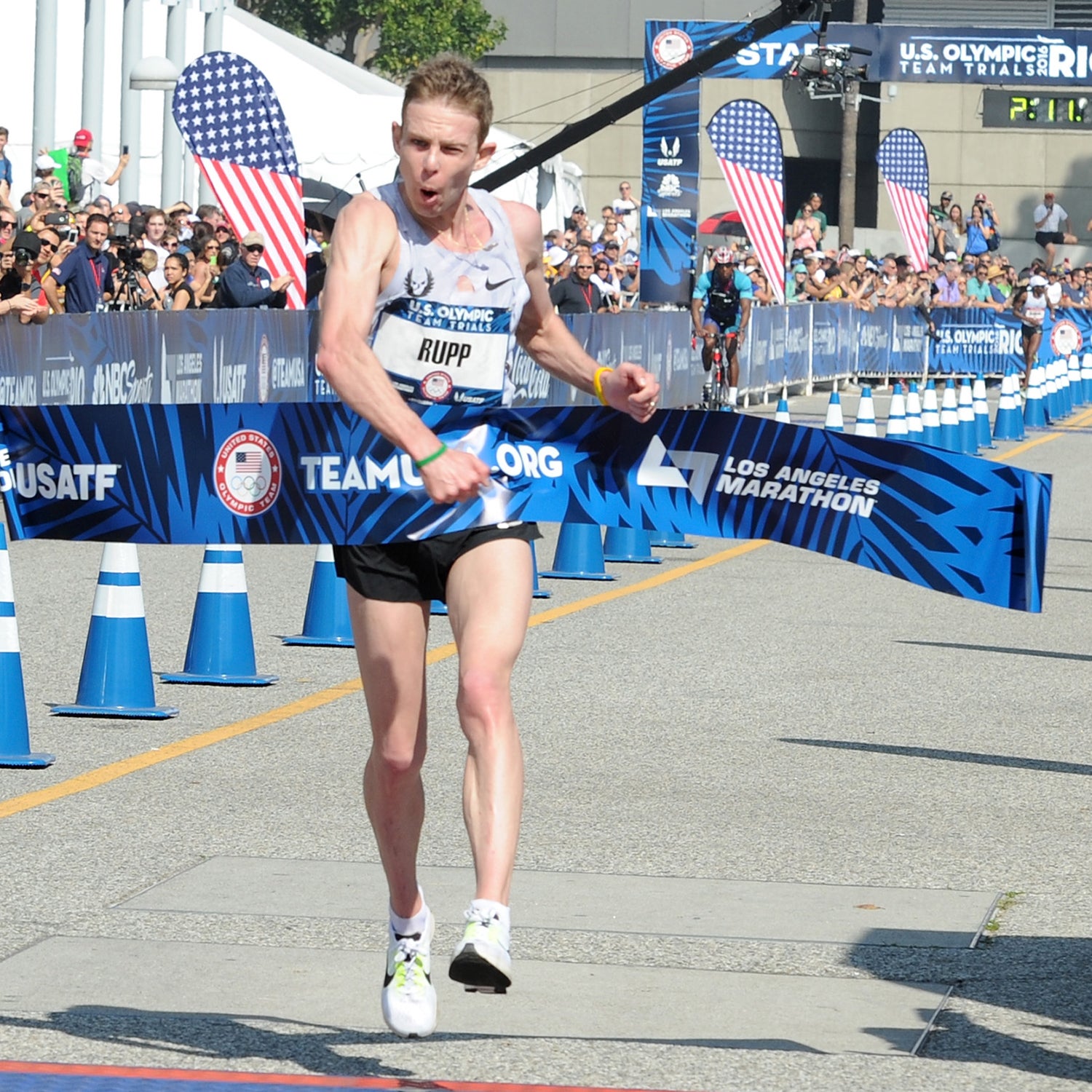At the end of last month, the International Association of Athletics Federations (IAAF) that it would be adding a few amendments to its official rulebook. After an update to Rule 143, which deals with athlete attire, the rules now include a clause that states: “Any type of shoe used [in competition] must be reasonably available to all in the spirit of the universality of athletics.”Ěý
Ěý
In an interesting coincidence, the IAAF announcement came the day after Olympic gold medalist Gwen Jorgensen about a customized pair of track spikes that she had worn at last month’s USA Track and Field National Championships. The shoe in question was a unique spike version of Ěýroad racing flat, which provided significantly more cushioning than a traditional track shoe.
“I hope Nike decides to put them on the market one day,” one commenter wrote in response to Jorgensen’s video. “I bet so many runners go thru the same dilemma of spikes vs. trainers. This shoe seems to answer that question.”
Perhaps. But in the wake of the latest IAAF rule update, another question arises: If Jorgensen is one of the only runners to have access to this hybrid spike/road racer, does that contradict the idea that competition shoes “must be reasonably available to all?”
One way of answering that question is to consider the simmering controversy surroundingĚýthe original Vaporfly 4%, which may have influenced the latest IAAF ruling.Ěý
According to a peer-reviewed (albeit Nike-funded) , the original Vaporfly 4% can help top athletes “run substantially faster,” by improving running economy by an average of four percent—hence the name. As the shoe was being developed, several elite runners, including Eliud Kipchoge and Galen Rupp, were secretly testing a Vaporfly prototype. But here’s the rub: they weren’t testing it on a treadmill in the confines of a Nike R&D lab—they were testing it in major races. Rupp was wearing a 4% prototype when he won the 2016 U.S. Olympic Marathon Trials. Ditto Amy Cragg, who finished first in the women’s race. Kipchoge, meanwhile, was wearing the 4% when he won the 2016 London Marathon in a time that was only eight seconds off the world record. Despite these impressive results, Nike didn’t make an official announcement about its new product until March of 2017, when the company published a touting the 4%’s unique construction as a “paradigm shift” in racing flat technology.
On the one hand, it’s obvious that shoe companies will work with elite athletes when developing new products. However, it does seem like there’s a difference between professional runners wearing secret shoe prototypes in training versus in a race setting. (And it’s not just Nike, by the way. When she won the Boston Marathon last April, Des Linden was wearing an . Meanwhile, Wilson Kipsang won the 2017 Tokyo Marathon in an that only recently went on the market.) If the prototype ends up working too well, there will inevitably be retrospective questions about whether it constitutes an unfair advantage.
ĚýĚý
With that in mind, I reached out to the IAAF to ask if the latest rule update was intended to prevent runners from clandestinely racing in prototypes. Alessio Punzi, the IAAF Road Running Manager, gave the following response in an email:
The position of the IAAF Technical Committee, supported by the IAAF Council, is that it isn’t realistic to think we can regulate a-priori the design of a shoe. You can regulate number and dimension of spikes, for instance, or the thickness of the sole (like other governing bodies do with other measurables, such as UCI’s 3:1 ratio limit for frame tubes, or the minimum weight limit for bikes, or permeability, buoyancy and thickness for swimwear). But how do you define in logical terms where to place the limit on something that doesn’t exist yet?
In the same email, Alessio alluded to Rule 143 (ii), which states that if evidence is provided to the IAAF that a specific shoe “does not comply with the rules or the spirit of them,” the organization may take steps to prohibit a particular shoe from being used in future competitions.Ěý
Needles to say, the “spirit of the rules” is intrinsically vague. For now, however, the IAAF does not seem to view in-race prototype testing as an issue.Ěý
But why did the organization feel the need to include a clause about shoes being “reasonably available to all?”ĚýI haven’t received a concrete answer to this question. It’s worth noting however that it’s not in the IAAF’s interest to levy a reactive ban on a shoe that has already been worn in major competition. Consider this: in the men’s marathon at the 2016 Olympics, all three medalists were wearing a version of the Vaporfly 4%, despite the fact that the shoe didn’t officially exist yet. The aforementioned study that touted the Vaporfly’s alleged benefits wasn’t published until November 2017, at which point dozens of other high-profile races (and hundreds of thousands of dollars in prize money) had already been won by runners wearing the Vaporfly 4%. How incentivized is the IAAF really going to be to cast doubt on the legitimacy of all these results by decreeing that the shoe will now be illegal?
Ěý
One potential solution would be for the IAAF to insist that elite runners can't compete in prototypes. This may go against current norms of how running brands prefer to roll out new product, but it would be a way for the IAAF to live up to its lofty language.Ěý
That said, the extent to which shoes can really impact race day performance is still very much up for debate. Earlier this year, Eliud Kipchoge won the London Marathon in an ĂĽber-exclusive Vaporfly descendent that Nike has dubbed theĚý. But Kipchoge could win the London Marathon in a pair of Keds. As şÚÁĎłÔąĎÍř’s Alex Hutchinson noted last year, the Vaporfly 4% so far hasn’t ushered in an era of ludicrously fast marathon times; the men and women’s world records have stood since 2014 and 2003, respectively. Although it feels more feasible now than before, the age of shoe-enabled technical doping is yet to come.Ěý
In the meantime, if anyone wants to get their hands on a pair of the Zoom Vaporfly Elite Flyprints, there , starting at around $2,000. Seems reasonable.Ěý


